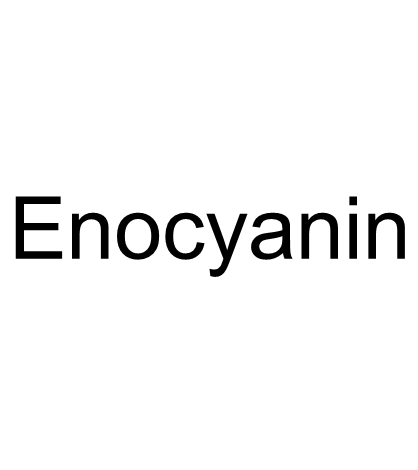Enocyanin
Modify Date: 2024-01-07 17:05:44

Enocyanin structure
|
Common Name | Enocyanin | ||
|---|---|---|---|---|
| CAS Number | 11029-12-2 | Molecular Weight | 207.247 | |
| Density | N/A | Boiling Point | N/A | |
| Molecular Formula | C15H11O | Melting Point | N/A | |
| MSDS | N/A | Flash Point | N/A | |
Use of EnocyaninEnocyanin is an anthocyanin extracted from grapes. Enocyanin shows inhibitory effect on the leucine aminopeptidase, acid phosphatase, γ-glutamyl transpeptidase and esterase activity[1]. |
| Name | Enocyanin |
|---|---|
| Synonym | More Synonyms |
| Description | Enocyanin is an anthocyanin extracted from grapes. Enocyanin shows inhibitory effect on the leucine aminopeptidase, acid phosphatase, γ-glutamyl transpeptidase and esterase activity[1]. |
|---|---|
| Related Catalog | |
| Target |
Acid phosphatase[1] |
| In Vitro | Enocyanin (0.1%) affects the leucine aminopeptidase, acid phosphatase, γ-glutamyl transpeptidase and esterase activity by 63%, 100%, 134% and 99%, respectively[1]. |
| References |
| Molecular Formula | C15H11O |
|---|---|
| Molecular Weight | 207.247 |
| Exact Mass | 207.080444 |
| PSA | 13.14000 |
| LogP | 4.38090 |
| Storage condition | 2-8℃ |
| 2-phenylchromenylium |
| Flavylium |
| InChI=1/C15H11O/c1-2-6-12(7-3-1)15-11-10-13-8-4-5-9-14(13)16-15/h1-11H/q+ |
| ANTHOCYANIN |